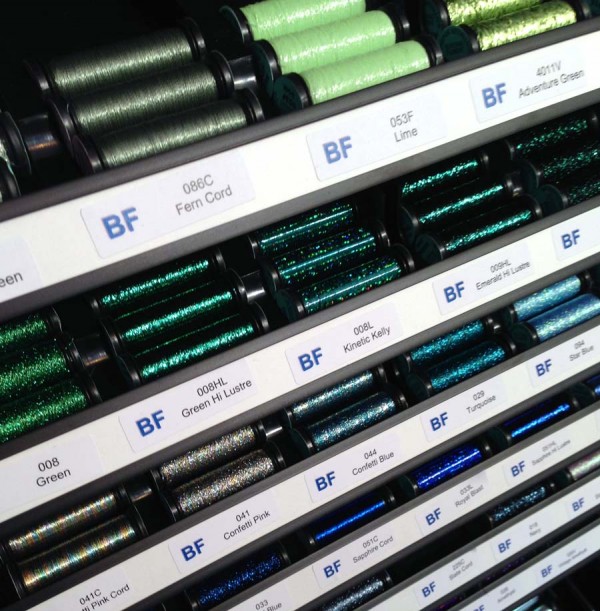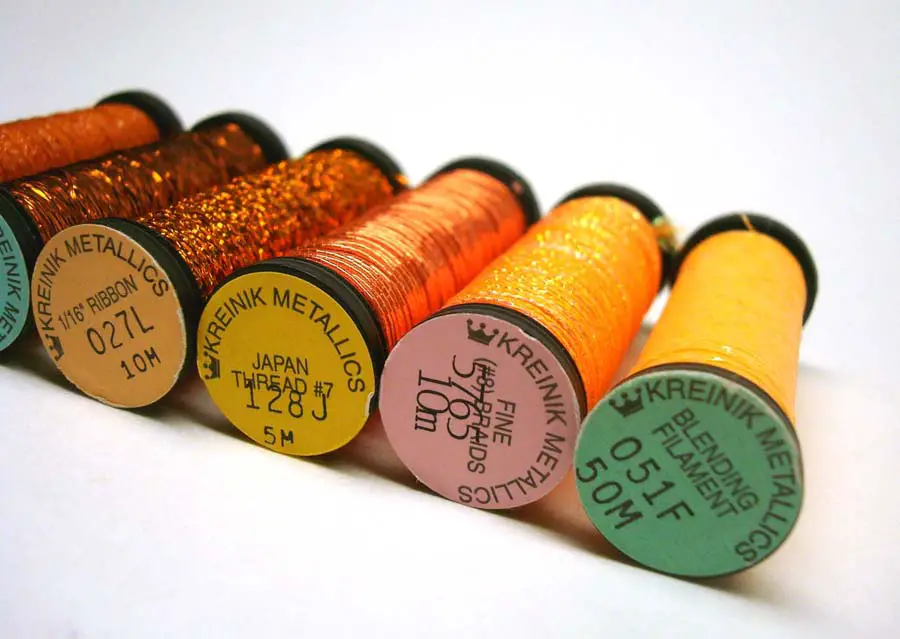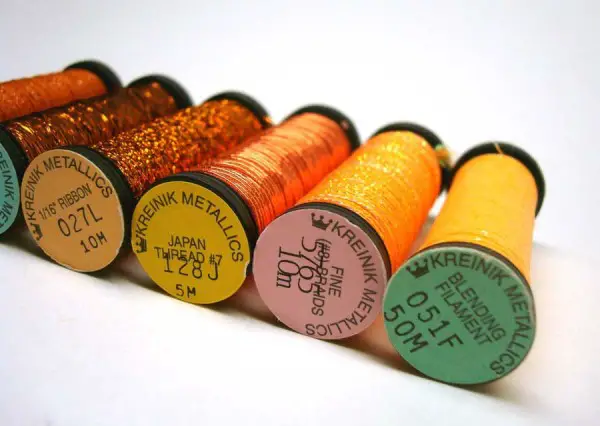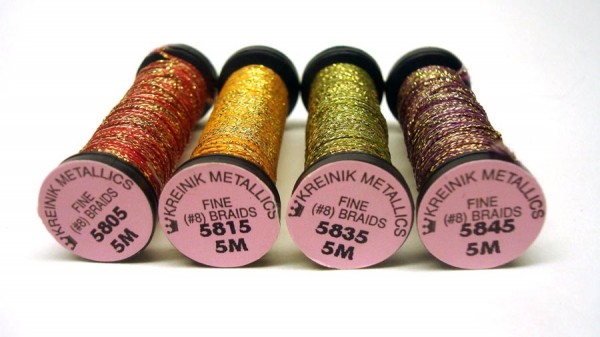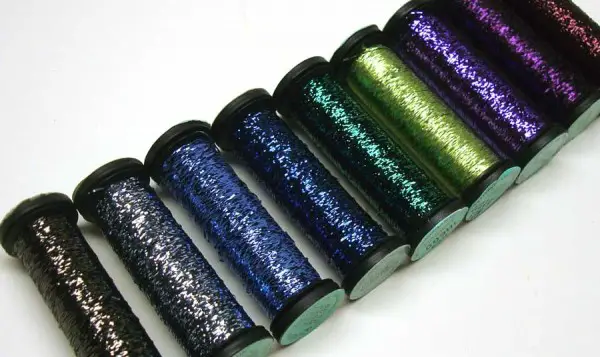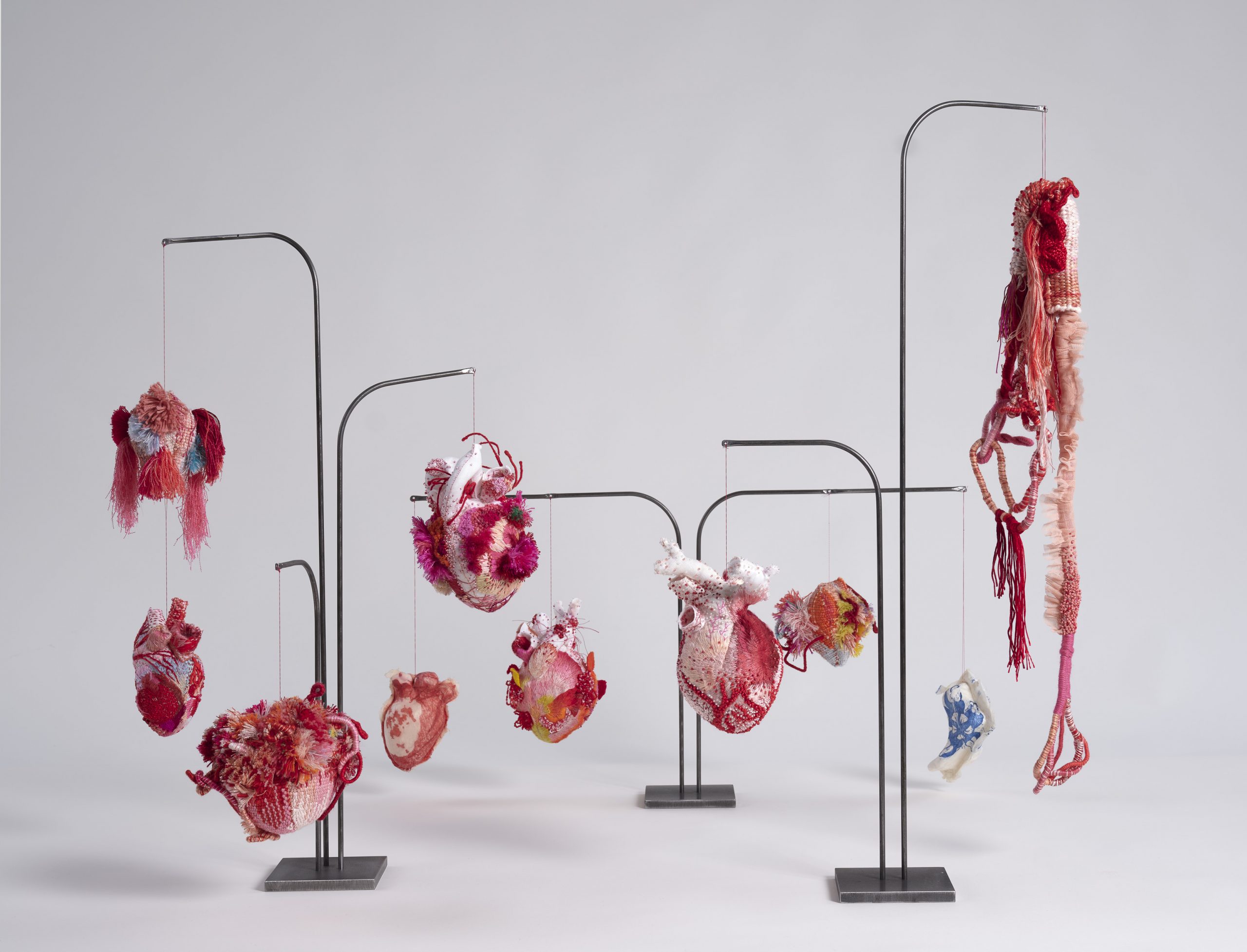It’s Kreinik Calling! where Dena Lenham from Kreinik Manufacturing Company shares inspiration and innovation with threads!
Good morning! Kreinik Calling here, with all the answers to life’s questions… Er, well, I wish. I’m sorry, I don’t have the answers to everything. However, I do have some suggestions for one little drama that often plagues stitchers when they are trying to relax by Netflix with their embroidery projects: thread breakage, specifically metallic thread breaking. Since Kreinik is known for making metallic threads for hand and machine embroidery, we get this question a lot from stitchers using any brand of metallic. So, let’s talk about solutions to the problem.
The most important factors are to prevent metallic thread from breaking are adjusting tension, using shorter lengths, and making sure you have the right needle.
Let’s dive a little deeper, but before I do, a couple of caveats!
Caveat #1: I’m talking about hand embroidery here, not machine embroidery (we can cover that another time if you’re are interested). When you say “metallic thread,” you are speaking about a family of fibers, a variety of sizes, widths, effects and qualities. Not all metallic threads are alike, and, as with anything, the better the quality thread, the better it will serve you. Choose wisely to avoid frustration.
Caveat #2: not all metallic threads break.
Kreinik Braids, for instance, are created when high-force, high-speed machinery wraps fiber strands all together in a braiding whirlwind. So they are pretty strong when used in hand embroidery.
Metallic Braids are meant to be used straight from the reel to provide a bolder metallic look to projects. They are strong and easy to use, and come in about 250+ colours. Kreinik makes a variety of Braid sizes to fit on a variety of fabric or canvas sizes. For a selection guide, visit the Kreinik website.
But some thinner metallic threads like the famous Blending Filament, may snap in the course of a cross stitch or needlepoint project. It’s like stitching with tinsel from a Christmas tree; due to the natural nature of the fine material, it’s just not going to hold up to tension, pulling, twisting, etc.
Blending Filament comes in a variety of finishes, or effects: Hi Lustre (HL will be listed after the color number), Basic, Vintage or antiqued (has a V after the color number), or glow-in-the-dark (has an F for fluorescent after the color number). It is thin, like tinsel from a Christmas tree, and adds a similar festive touch to holiday designs. When it’s not Christmastime, use it to add a visual element, a touch of light, or realism to designs (real life sometimes shimmers!).
Patience and gentleness are keys with this lovely thread, which produces unparalleled effects in embroidery. That is, when you want a subtle, whisper of a shimmer, Blending Filament is your tool.
The best advice comes from those who have successfully accomplished something, so here are top tips from stitchers all over the world, taken from the Kreinik Facebook page, regarding how to keep a metallic thread from breaking.
Use Shorter Lengths
- Shorter threads and larger eyed needle – don’t pull too tight and slow down — Bev F.
- Stitch slower, and use shorter threads. — Karen C.
- Use a larger needle so that the thread won’t get worn from rubbing on the ground fabric. — Beth V.
- Definitely use shorter lengths! — Anita C.
- Thread Heaven and short lengths. — Emily W.
- I always use shorter strands and I lightly wet it with a sponge and that helps a lot. — Anne K.
- I have found using short lengths of thread helps out a lot with the breakage. Instead of Thread Heaven (I have never used it so I have no opinion on it), I just used a damp cloth to dampen the thread and it works wonderfully for me. Also, after every couple of stitches I let my needle and thread untwist by holding my fabric upside down and letting the needle and thread dangle on its own and it untwists for me. — Dawn T.
- Short lengths, don’t pull through the fabric too tight, and maybe a needle with a slightly wider eye…Be gentle and patient with it. — Steff W.
- Use much shorter lengths to prevent so many twists and the wear and tear on the thread as you sew which can cause it to get caught. — Katrina S.
- With the Blending Filament, I have found that using shorter lengths helps in keeping the filament strong. It means threading a needle a few more times, but the fewer passes through the fabric you make, the less tugging you are doing on the thread… — Carolyn M.
- Thread Heaven, short lengths and let the thread “untwist” almost every stitch. — Judy K.
Use The Right Needle
- Change your needle – your needle might have a burr in the eye that is wearing the metallic down and you might want to switch to a slightly larger needle – it’ll make the hole bigger as you pass the thread through the fabric, making it easier for the metallic to pass through the fabric. — Erica K.
- Use a wider eye needle this way there is no fraying as you pull it back and forth thru the fabric. — Denise S.
- I use the Japanese needles with any of the metallic threads – the round eye helps with the fraying. Shorter lengths as previously said and keeping your fingers over the eye so the thread slips less. Then tension – then gentle but firm in your handling. — Robin B.
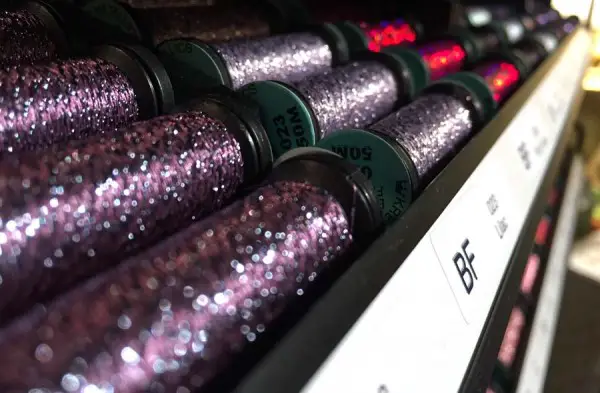
Be Aware Of Thread Tension
- Continually twist your needle with each stitch as you go, which will keep it from twisting then breaking. One of my teachers said this is a Japanese embroidery technique. So, for each stitch or two, twist the needle in your fingers a rotation. Then as you go, in between stitches, keep twisting as you pull it out. You will find your thread rarely breaks if you do this. — Mary M.
- Watch your tension – I’ve never had an issue with it breaking. Also use shorter lengths and Thread Heaven (thread conditioner). — Susanne C.
With Blending Filament, you can sometimes do all of the stitches without it and then just stitch the blending filament on top. Neat thing about that is that it really sparkles and it isn’t twisted with the other thread. — Christine F.
